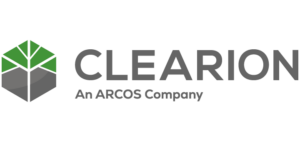Posted by Madelyn Mateo

There is something so satisfying about being in the right place at the right time. It is an effortless path to success. Things just work out perfectly. You can’t always take credit for that kind of serendipity, but it sure does feel good.
When you actually plan to be at the right place at the right time, it feels even better! The same can be true of a phenomenon known as Right Tree, Right Place or RTRP in vegetation management lingo.
RTRP = A tree that is planted in the right place that requires no or minimal pruning.
That idea of no or minimal pruning is what draws the attention of a vegetation manager, because when fewer trees need pruning, utilities can deliver their service more reliably and at a lower cost. RTRP also eliminates VM safety concerns and is less intrusive to customers. Imagine no longer having to leave that door hanger at a house, informing a customer that you are going to side prune the fruit tree that feeds them all summer. No more having to remove a child’s favorite climbing tree–the one her parents climbed themselves growing up. Never again be faced with having to modify the tree that was planted for a deceased family member. You can plan RTRP with the right software, one right tree at a time.
Identifying RTRP Using Existing Data or LiDAR. Identify RTRP trees in your ROW that you know you will not have to worry about for at least three years. You can enter them one by one or you may want to explore LiDAR and tree detection and species identification. You can even get it down to the span level and eliminate RTRP spans from your maintenance cycle. I wish that I could say RTRP lasts for the lifespan of a tree species (20-30 years), but natural occurrences, such as lightning, fire, or storms (tornadoes, hurricanes, floods, nor’easters) can kill a tree, allowing a space for someone to come and plant a wrong tree in the wrong place. So checking every three years is a good starting point. Once you go back, you just need to update that tree/span and set it to inspect in three years once again. You can also log your TGR locations, since we know that when you apply the tree growth regulator the tree is likely to hold for the three year cycle.
Species-Specific Management Practices. . VM is about understanding how each tree grows and how to have minimal contact and continue providing safe and reliable power. The goal is less contact, less work, fewer dollars, and fewer complaints. You need to educate those who are accustomed to traditional practices that mandate a minimum distance clearance of 10FT-15FT-20FT (or whatever distance it may be in your state). It’s not about creating a box around the utility line and cutting away regardless of whether there is a slow or fast growing tree. Clearion data mapping, collecting, and reporting tools can help you move to more species-specific management practices.
Save Money and Increase Quality. How do you save money with an RTRP approach? If you can identify trees/spans that do not need work, then you can eliminate them from the current plan and not have to pay for the inspection or the tree crew that mistakenly prunes because of traditional standards. Remember, if a tree does not need to be pruned and the tree crews prune it because they want to be “on the safe side,” then you are paying for the trimming and also the disposal of the debris generated. If you have all the RTRP data in your software, then you can forecast expenditures more accurately and generate a metric-based cost-benefit analysis.
Sustainability Supportive Metrics. The RTRP data complements the Arbor Foundation Tree Line USA program including Quality Tree Care. Consider including this in your QA/QC patrol and have the field arborist update the trees that are considered RTRP, Tree Planting (remediation) record any danger trees that have been removed and replaced with a right tree, and Arbor Day Celebration to document planted trees using the public to provide where they planted their RTRP tree. If you plant the right tree it the right place, there will be more healthy trees that support sustainability initiatives.
Forecasting Solutions. What would it take to make all of your VM spans RTRP? Can there exist a utility world where there is such thing as NO Tree Related Outages? I want to hear from you.
